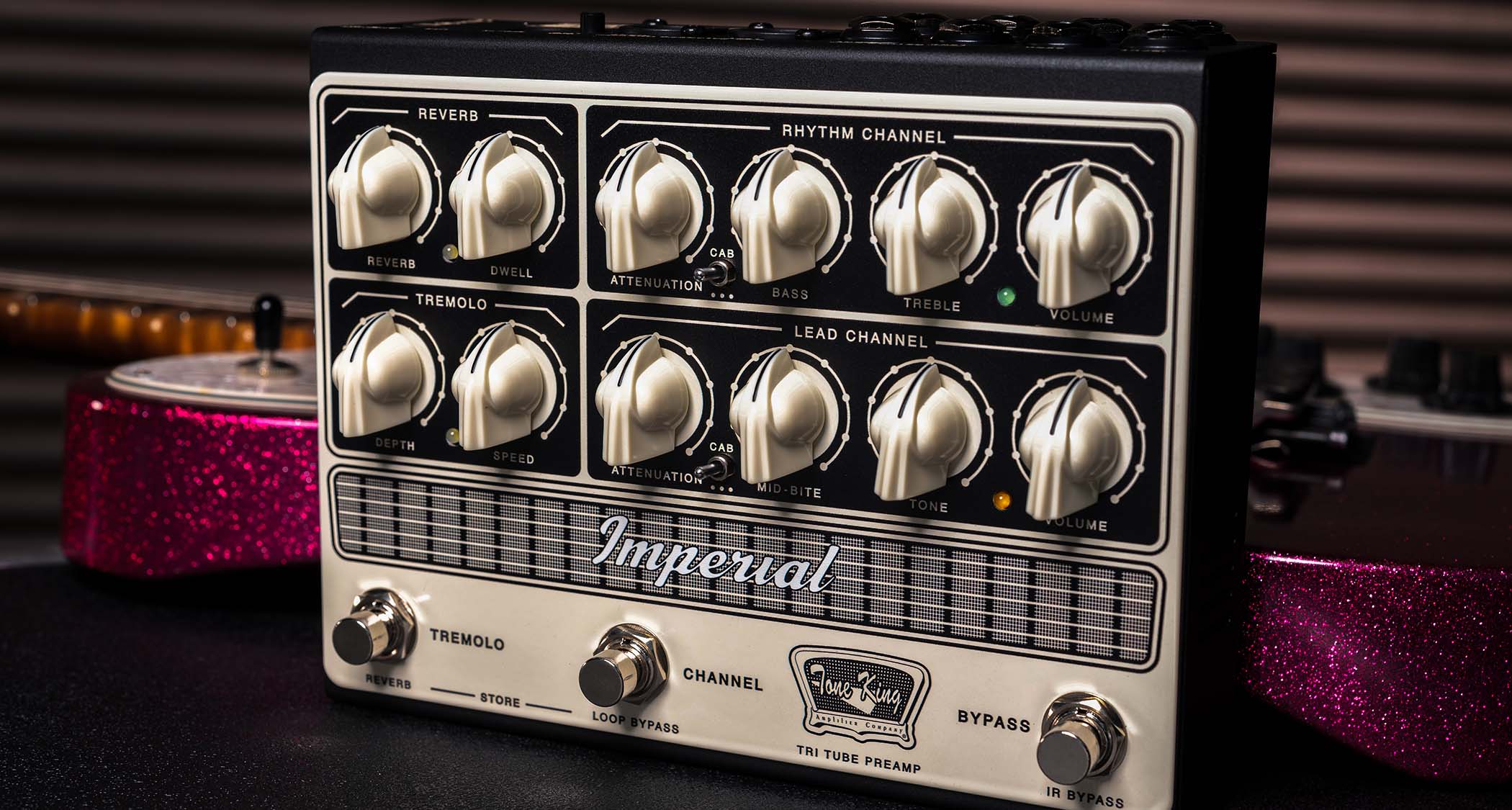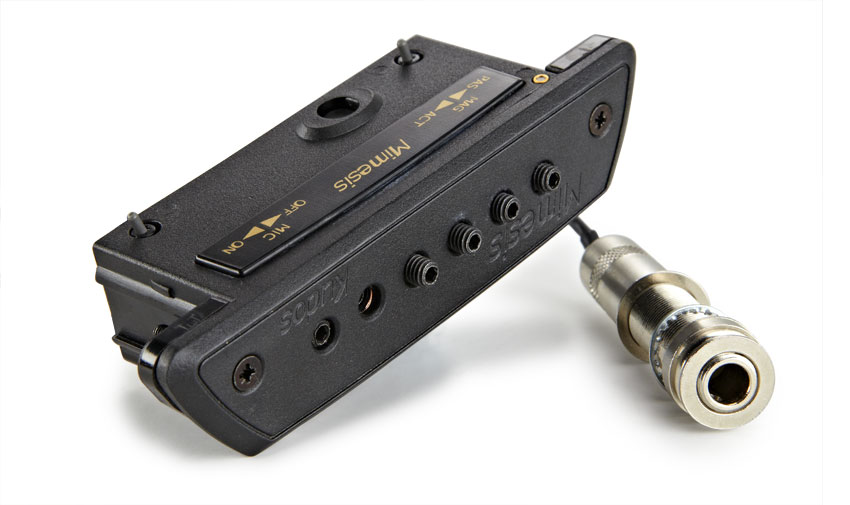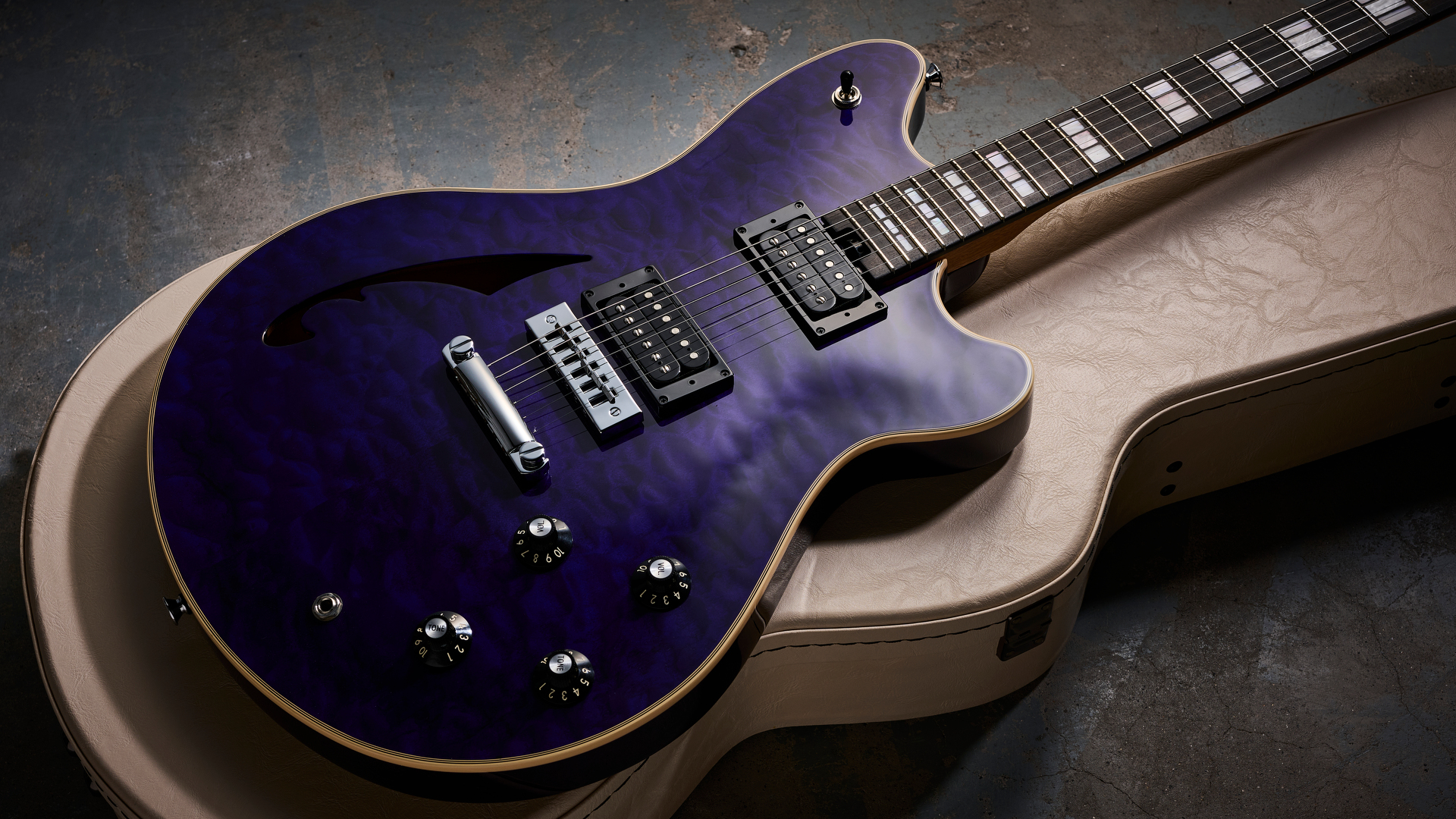MusicRadar Verdict
A thoroughly professional solution for amplifying your acoustic - especially if you don't like that piezo sound.
Pros
- +
Lightweight and easy to fit. Separate mic/ magnetic outputs. Dynamic studio-quality sounds.
Cons
- -
It's pricey and all control is outboard.
MusicRadar's got your back
The science of amplifying an acoustic guitar continues to occupy both players and designers. Unless you want to use a conventional stand microphone, the sky is the limit in terms of available contact, under-saddle piezo and magnetic soundhole pickups.
That's not to mention internal (and external) microphones or a blend of any of the above, while recent advances, such as Fishman's Aura technology, move into the digital realm, recreating studio-mic'd sounds. The electro-acoustic has come a long way, but with so many different gigging or studio requirements, there's no such thing as the 'perfect' system.
"This is not a quick-fix 'amateur' solution: it's aimed at the serious performing guitarist"
Mike Vanden is a highly respected guitar maker, but he's equally renowned for his acoustic soundhole pickups. His original Mimesis design led to a continuing design tie-up with Fishman, which gave birth to the virtual industry-standard Rare Earth soundhole pickup. It's a very welcome departure for many players who don't like the sound and ultra-fast 'snap' of the under-saddle.
Vanden's latest creation is the Kudos - a combined magnetic soundhole pickup and microphone system that's expandable and features dual mic and magnetic outputs. This is not a quick-fix 'amateur' solution: it's aimed at the serious performing guitarist.
"The idea was to give players the option of a warmer acoustic sound compared with other popular acoustic pickups, and to have adjustable polepieces, to alter string balance and overall voicing," Vanden tells of his intention with the Kudos.
"I also wanted to combine the magnetic with a really good-sounding built-in mic that had the option to be used on its own. Building the mic into the Kudos case gives ease of use. The mic capsule is tiny - only 2.5mm in diameter - but is a very high- quality precision-engineered piece of kit... and expensive."
Not a million miles away from Vanden's most recent Fishman design, the passive Blackstack is chunky but deceptively lightweight, with highly visible Allen-key adjustable pole pieces. It's powered by two CR2032 lithium cells mounted on the underside of the casing, and comes with a pre-wired endpin stereo-jack output socket.
It also features two mini two-way switches on the front of the plastic casing, which are easily accessible through the soundhole once the pickup is fitted. The bass-side switch allows the magnetic pickup to run in passive or active modes (the passive mode bypasses the preamp, so it can be used even if your batteries fail). The second treble-side switch is an on/off for the microphone.
Designed to fit into soundholes as small as 94mm (3.7 inches) without slackening your strings, the Kudos was an easy fit into a Martin 16 Series cutaway dreadnought's 102mm (four-inch) aperture. The intention is to fit the output jack into the base strap-button hole of the guitar. The polepieces - with an outer centre-to-centre spread of 51mm (two inches) - line up near exactly with the guitar's string spread.
Sounds
"We have three core sounds: magnetic passive and active, plus the internal mic"
Basically, we have three core sounds: magnetic passive and active, plus the internal mic. The first two sound the closest; not surprisingly, the passive magnetic has a slightly darker bottom end sound, the lower mids a little dominant - quite an 'old' electro sound.
Switching to the active mode boosts the output by 9dB and enhances the highs, giving a breathier tone but still subtly 'magnetic' in its character. It's a very Rare Earth type of sound, if a little more realistic to our ears. It still comes with some 'electric-ness' as you move up the neck, though, which is attractive for bluesier/jazzier leads and bottleneck styles.
As you'd expect, the microphone changes the character considerably. It's a lower-level output - not that this matters, since you have to use dual amps or amp channels. There's no mixed mono output: if you plug in a standard guitar lead, you'll just hear the magnetic output. There's plenty of hi-fi studio crispness and a little boxiness, especially in the lower mids, but that's easily removed. Overall, the mic gives a much more natural representation of your acoustic.
It's interesting to record the different sounds, too. As you can hear on our demo, the active magnetic and mic outputs mixed together are extremely complementary: they're very full-sounding, and when placed in a stereo spread they sound like a nicely tracked part. Impressive stuff indeed.
Live, of course, it depends very much on your style and environment. The amount of the mic you can use depends on your situation. Certainly, sending the mic out front and only using the magnetic as your monitor sound is the ideal so long as you have a soundman, or time for a decent soundcheck. Otherwise, if you're running both through the same two- channel amp, you'll invariably wrestle with potential feedback from the mic.
Of course, you have no control (apart from the passive/active and mic switches) onboard the guitar. It means that any volume or feedback control has to be done outboard. This writer can't help thinking that an optional side-mounted preamp might help some players - we don't all have the luxury of diligent sound engineers, and especially in small band settings, subtle volume/tone changes are part of many players' styles.
A classy, well-designed piece of kit, the Kudos builds on the Rare Earth and other modern soundhole pickups by offering not only a fairly natural 'acoustic'-sounding magnetic tone, but via the onboard mic and dual outputs, the ability to create one of the most natural and dynamic acoustic amplification systems we've heard.
It also proves excellent DI'd for recording, especially handy where you can't use a regular mic. It can be easily fitted (and removed without trace) so long as you can handle fitting the output jack.
As we've said, it's not for everyone. Some players need onboard control for their gigs, and to maximise the mic sound it really does need to head out front and not to your monitor or acoustic amp. However, for the right player, the best has just got better.
Dave Burrluck is one of the world’s most experienced guitar journalists, who started writing back in the '80s for International Musician and Recording World, co-founded The Guitar Magazine and has been the Gear Reviews Editor of Guitarist magazine for the past two decades. Along the way, Dave has been the sole author of The PRS Guitar Book and The Player's Guide to Guitar Maintenance as well as contributing to numerous other books on the electric guitar. Dave is an active gigging and recording musician and still finds time to make, repair and mod guitars, not least for Guitarist’s The Mod Squad.

Don’t miss this record-breaking 100-Hour DJ marathon livestream fundraiser featuring 90 artists

“I had to say ‘No, guys I swear we’re a real band’”: South Arcade on how they became the figureheads of a growing Y2K revival

“A pedal that sings with harmonic richness and blooming touch response ”: Tone King offers up boutique tube amp tones for your pedalboard with the Imperial Preamp











